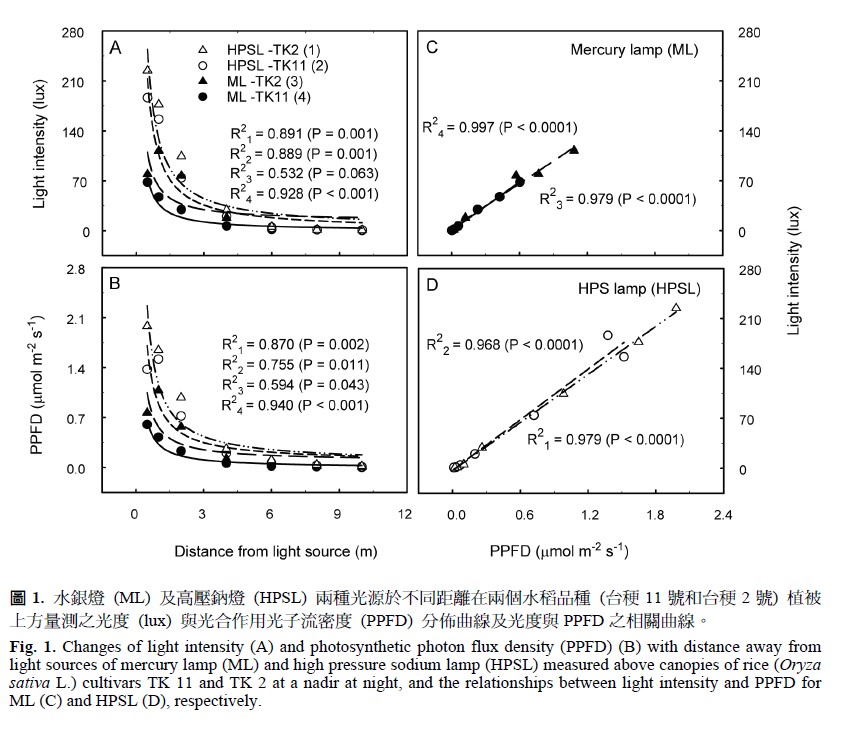All issues

Author:Yuh-Jyuan Lee, Chwen-Ming Yang*, and Chiao-Ling Hsiao
Abstract:
eld experiments were conducted in the experimental farm of Taiwan Agricultural Research Institute to study the effects of short-term (2 h in-between 23:30 and 01:30) night interruption, using high pressure sodium lamp (HPSL) and mercury lamp (ML) as light sources with no light treatment (CK) in comparison, on the growth, development and yield of rice (Oryza sativa L.). Cultivars of varied photo-sensitivities, higher sensitive TK 11 relative to lower sensitive TK 2, were selected to grow in the second crop of 2007 and the first crop of 2008. From the distribution curves of light intensity and photosynthetic photon flux density (PPFD) with distance away from light sources, radiation values of HPSL were higher than that of ML at the same distance and the decrease of radiation with distance obeyed the general inverse square law. As the results indicated, short-term night interruption affected plant development and growth duration. Light interruption in the dark period extended the days required from transplanting to 50% heading and from 50% heading to harvest, and the effects were stronger when plants were more closed to the light sources. Night interruption also affected plant growth of both cultivars. At harvest, plant height was increased by lighting in plants within 4 m from light sources in the first crop, but not in the second crop, especially under HPSL. Leaf number and leaf area were improved in plants within the distance of less than 4 m in both crops and the increments were larger in TK 11 than in TK 2. Similar results were found in weights of leaves and culms and HPSL treatment had a better improvement. However, night interruption decreased panicle weights of these two cultivars at harvest, particularly in plants of TK 11 within 4 m distance of light sources. The inhibition effect was more pronounced under HPSL. From the analyses of yield components, lighting imposed negative impacts on percent effective tillers, percent filled grains, and 1000-grain weight in both cropping seasons. Plants of TK 11 within 4 m and plants of TK 2 within 2 m, though with less scale, were the range most affected in both crops. Due to an increase of vegetative tissues while a decrease of reproductive tissues, harvest index of two tested cultivars was declined by night interruption, particular within 4 m away from light sources.
Key words:Dark period light interruption, Night interruption, Photo-sensitivity, Rice, Growth, Production
Download:![]() PDF Links
PDF Links
- 1. Development of Tractor-Mounted Seedling Transplanter for Sweet Potato
- 2. Synergistic Effect of Additional Gas on the Toxicity of Phosphine to Sitophilus oryzae and Sitophilus zeamais (Coleoptera: Dryophthoridae)
- 3. Effects of Temperature and Solar Radiation on Growth Traits and Plant Elements in Purple Leafy Sweet Potato
 Submit your manuscript
Submit your manuscript
 Guide for authors
Guide for authors